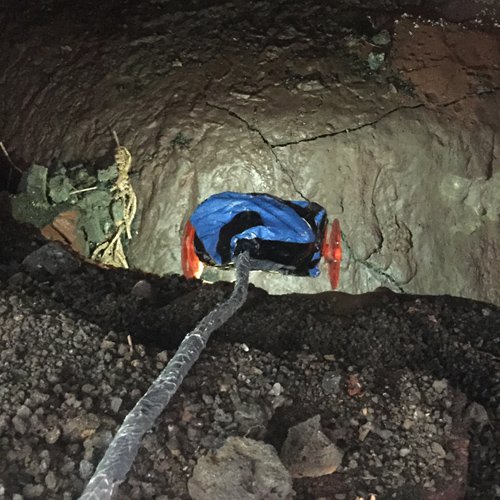
VolcanoBot was developed to map volcanic vents and their underlying conduit systems. It uses a structured light sensor for mapping and carries an IR temperature sensor, analog distance sensor, and Inertial Measurement Unit (IMU) inside a housing. Data collected by the VolcanoBots yields the first insights into the detailed geometry of volcanic fissures at depths of up to 25 m. The robot was deployed at the Mauna Ulu eruption site on Kilauea volcano in Hawai’i, and collected first-of-its-kind data from inside the fissure system (an aligned sequence of vents). The robot is designed to access underground features of volcanoes inaccessible to humans. To first order, fissures are often modeled as vertical and linear. In reality, there are many irregularities along fissures that are large enough to affect the fluid dynamics of an eruption. VolcanoBot is mapping these irregularities and providing realistic fissure geometry that will greatly enhance our understanding of the dynamic behavior of fissure eruptions.
This work is led by Principal Investigator,
Carolyn Parcheta.

